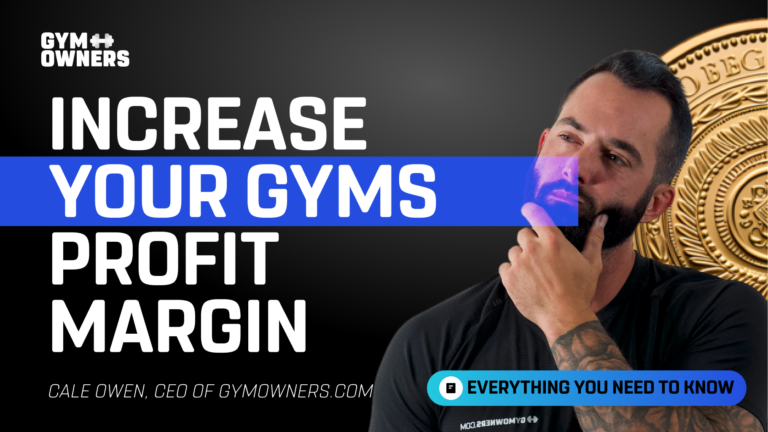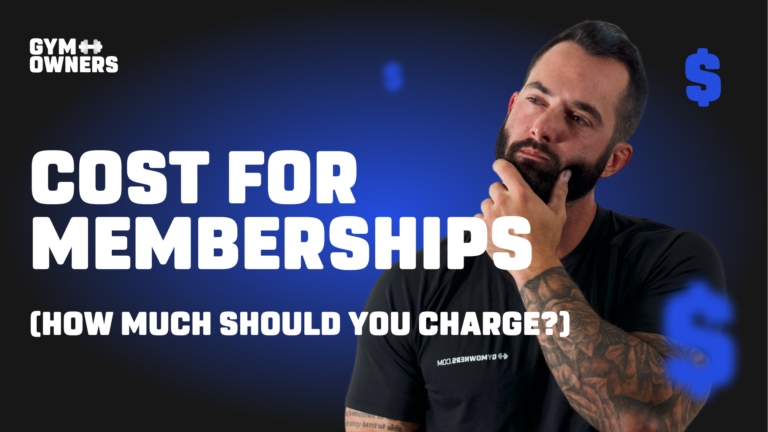5 Essential Metrics To Track As a Gym Owner
Running a gym is no easy or simple feat. Tracking your business metrics is crucial to knowing whether or not your gym is succeeding, and where you have room to improve. As they say, you can not improve what you don’t measure.
But what are the business metrics you should be tracking as a Gym Owner? In this article we will breakdown the most essential metrics that you should be tracking as a Gym Owner as well as how to track them. The most important metrics to track as a gym owner are your Customer Acquisitions Cost (CAC), Churn Percentage, Lifetime Value of Your Clients (LTV), Gross Profit Margin, Hypothetical Gym Max.
#1 CUSTOMER ACQUISITION COST (CAC)
First, what is Customer Acquisition Cost, or CAC? CAC is the cost you incur to sign up one new client. Expenses that go into acquiring a new member include the cost of the salesperson’s time and commission, as well as the cost you incurred while marketing to the new member.
So why is it important to stay up to date with this number? Because it will allow you to know if you are making money when you sign up a new member, or losing money.
If your customer acquisition cost is too high you will know you need to lower your marketing costs or cut back on sales people. You will want to update this on a monthly basis.
To calculate CAC you can use this simple formula:
CAC = (total marketing spend + total sales expenses) ➗Number of customers acquired
Here is an example:
- Total Marketing spend for the month = $1200
- Sales Expenses (commissions, salesperson pay, etc)= $800
- $1200 + $800 = $2000 total spend on marketing and sales
- Number of clients gained that month: 10
- $2000 marketing & sales spend ➗10 clients gained = $200 CAC
So, it costs you $200 to acquire one new client.
The more efficient you are at acquiring new clients, the lower your CAC will be.
To get even more specific you could use this formula to calculate the cost to acquire a client on different platforms.
For example you could compare the CAC of just facebook ads, to the CAC of just organic outreach to see if one is costing a large amount more than the other. This business metric can help you make decisions on where and how you market your gym.
#2 CHURN PERCENTAGE
Simply put, churn is your lost customers. If you think of your business as a bucket, and the new members you acquire each month are the water flowing in, then churn is the water that leaks out through the holes in the bottom. If the holes at the bottom of the bucket are too big, then it doesn’t matter how much water you pour in, you will never be able to make up for the leak and fill the bucket.
Typically churn is determined by a monthly percentage. To find your churn percentage you can use this simple formula:
Churn = # of clients who exited by the end of the month ➗Number of clients you had at the start of the month
For example…
Let’s say you had 15 clients leave in the month of January, and at the start of the month you had 100.
So to find churn you would take 15 ➗100 = 15% churn.
The industry average is about 15%, so keeping an eye on this number will allow you to know when it’s time to focus on acquiring more clients, or lowering your exits.
#3 LIFETIME VALUE OF A CUSTOMER (LTV)
LTV is the amount of revenue each client is worth to you on average. Lifetime Value is a super important metric for gym owners to know because it gives you a snapshot into how much you can actually spend to acquire a new client. If your LTV is only $500 per customer, you don’t want to spend $600 to acquire a client.
To calculate your LTV, this is the most accurate formula you can use…
(total lifetime revenue ➗total lifetime customers) ➗ (Total churn over the course of your business ➗total lifetime customer)
Let’s break down an example of how to calculate LTV…
Lets say your revenue was as follows:
2020 Revenue = $200k
2021 Revenue = $300k
2022 Revenue = $500k
Total Lifetime Revenue = $1,000,000
Let’s say your total lifetime customers were as follows:
2020 New Clients = 200
2021 New Clients = 250
2022 New Clients = 300
Total Acquired Clients = 750
Current Active Clients = 200
So total churn is 750 – 200 = 550
Now that we have each component, we can apply these numbers to the LTV Formula:
($1,000,000 ➗750) ➗(550 ➗750) = $1,818 LTV
Now that you have the metric of what your average client is worth to you, you can modify your cost to acquire a client to make sure you are profitably growing your gym.
#4 GROSS PROFIT MARGIN
Gross profit margin is the cost you incur to fulfill your services. What costs do you have to run your fitness classes including trainer pay, overhead, etc.
The formula for calculating gross profit margin:
Gross Profit Margin = Gross Margin ➗ Revenue
To find your gross margin, you will use this formula:
Gross Margin = (Revenue per session – Cost to fulfill session)
Here is a real world example of how to calculate your gross profit margin…
To find your gross margin, let’s say you have 100 members, who each pay $120/month.
100 members x $120 = $12,000
Now we need to find revenue per session. So let’s say you have 120 sessions per month
$12000 ➗120 = $100 per session
But.. We still have to subtract the labor cost of the trainer
So let’s say the trainer makes $20/hr
$20 x 1.22 (payroll taxes) = $24.40
$100 – $24.40 = $75.60 gross profit per class.
Now we can plug that number into the original equation,
$75.60 Gross Profit ➗$100 Revenue Per Session = 75.6% Gross Profit Margin
#5 HYPOTHETICAL GYM MAX
The hypothetical gym max is an essential metric to calculate how big your gym can actually grow.
The equation is just as simple as the concept:
# of Monthly Sign-Ups ➗Monthly Churn % = Hypothetical Gym Max
For Example…
Let’s say you have 15 paid signups per month on average
And your churn is 10% monthly
Then 15 ➗ 10% = 150 max members
BEFORE YOU GO…
If you’re not already tracking these essential business metrics- this is your sign to start immediately. To make it less daunting, check out GymDash, our all in one gym management software that allows you to easily and quickly input your stats to deliver your accurate business metrics. Which means you don’t have to save and manually use any of the above formulas. Save time, get organized, and start scaling up your gym today.






